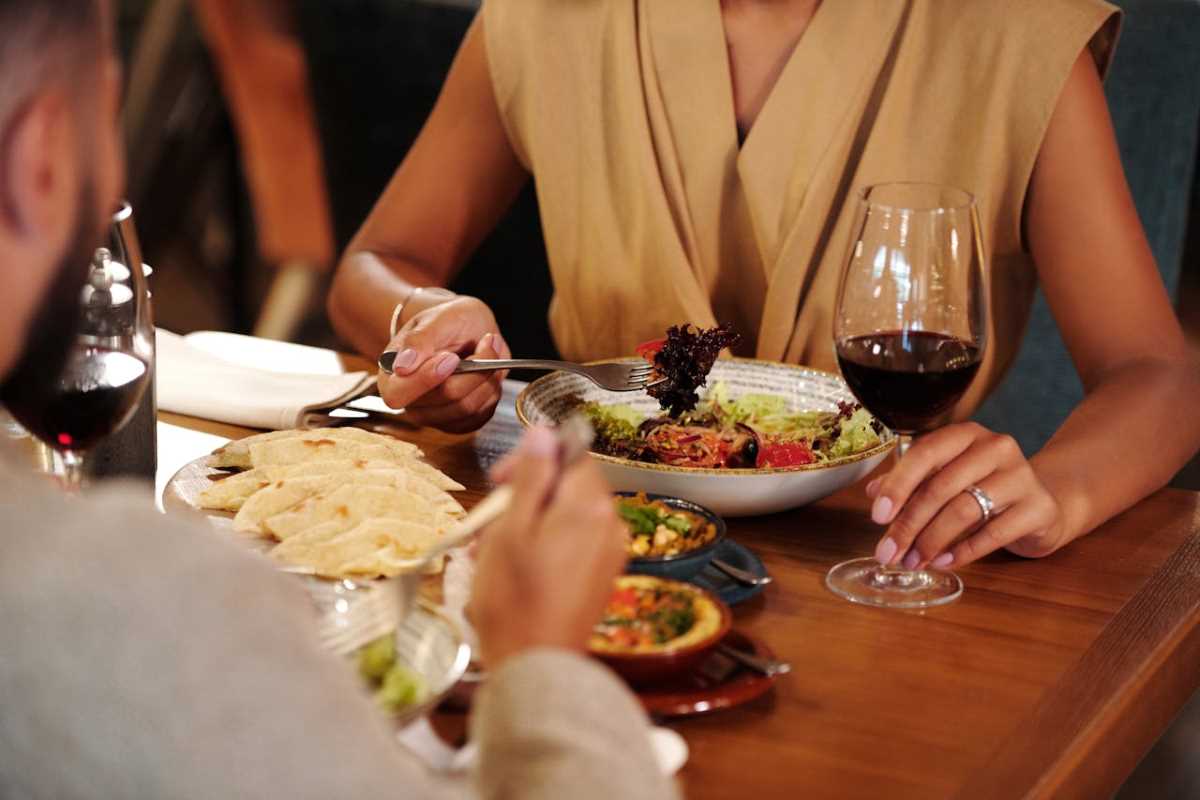Between demanding jobs, errands, and the thousand other things that make up daily life, planning meals as a couple can feel like another chore on an endless to-do list. Add in differing dietary preferences, fitness goals, or busy schedules, and it’s easy to see why takeout might feel like the easiest option. But eating well doesn’t have to be a source of stress—or conflict.
Creating a shared meal plan that works for both your diets and schedules is more than doable. It just takes a little communication, compromise, and a solid strategy. Here’s how to make it happen.
1. Start With a Conversation
Before you head to the grocery store or Google 50 low-carb recipes, take a step back and talk things out.
- What kind of meals do you both enjoy?
- Are there specific dietary preferences or requirements (vegetarian, keto, gluten-free) that need to be factored in?
- How often do you realistically want to cook?
These are the kinds of questions that can help you find common ground and avoid frustration when the week gets busy.
You might discover that while your partner dislikes cooking during the week, they’d be happy to batch prep breakfasts on Sunday. Or that even though you’re trying to cut back on carbs, you’re fine finding low-carb substitutions for pasta nights.
The goal isn’t just accommodating each other—it’s finding ways to sync your eating habits with your lifestyles.
2. Set Shared Goals
Meal planning doesn’t have to mean rigidly eating the same thing all week. Think of it as a team effort toward shared goals. Maybe you’re both trying to eat more home-cooked meals to save money or prioritize healthier foods because you’re feeling sluggish. Shared goals create a framework that keeps you motivated while allowing for flexibility.
Your shared goal might look like eating five home-prepped dinners a week. You can enjoy different meals—one of you might go for roast chicken, while the other tries a plant-based bowl—but the overarching structure helps you both stay on track.
If saving time is your primary goal, you can plan meals around components that work for both diets, like roasted veggies or a versatile grain like quinoa.
3. Plan Your Week Around Your Schedules
Planning meals that fit your schedules is as important as considering your food preferences. Sit down with your calendars (or sync them digitally) and identify what your week looks like. Are there nights when neither of you has time to cook? Mornings where you’re both rushing out the door? Build your meal plan around these realities.
For busier days, you might rely on pre-prepped options like frozen soups, overnight oats, or salad kits. On lighter days, tackle meals that require a bit more effort. By being realistic, you’ll avoid feeling overwhelmed or ditching the plan entirely mid-week.
4. Find Overlapping Ingredients and Flexible Recipes
When catering to different diets, overlap is your best friend. Look for base ingredients that you both enjoy, then customize toppings or sides to suit individual needs.
Say you’re eating low-carb and your partner isn’t. You can cook up a big batch of stir-fried veggies and protein, then serve yours over cauliflower rice while they enjoy regular rice on the side. For taco night, prep the same fillings and swap your tortilla for lettuce wraps or a taco salad. This approach saves time in the kitchen without feeling like you’re constantly compromising.
- Recipes that are easily adaptable—like grain bowls, stir-fries, soups, or build-your-own salads—are your secret weapon.
- They allow you to mix and match ingredients without a ton of extra effort.
5. Put Prep Time to Good Use
Meal prepping doesn’t mean you need to spend your entire Sunday chopping vegetables. Even small steps can make a world of difference during the week.
- Start with prepping one or two versatile components that can anchor multiple meals.
- Roast a big tray of veggies to use in grain bowls, wraps, or side dishes.
- Cook up a batch of quinoa or rice.
- Marinate proteins ahead of time so they’re ready to be cooked.
Having these building blocks ready to go reduces decision fatigue and makes throwing meals together faster—especially on hectic weeknights.
And don’t forget about breakfasts and snacks! Prepping grab-and-go options, like boiled eggs, yogurt cups, or homemade trail mix, ensures you’ll both have something satisfying ready as you rush out the door.
6. Use Tech to Your Advantage
Meal planning doesn’t have to involve spreadsheets or hours spent flipping through cookbooks. Take advantage of technology to streamline the process.
Apps like Mealime, Plan to Eat, or Paprika allow you to plan weekly meals, save recipes, and even create grocery lists automatically. You could also use a shared digital platform, like Google Keep or a notes app, to collaborate on your plan in real-time. That way, both of you can add to it when inspiration strikes.
If you’re scraping for ideas, websites like Tasty or Allrecipes often have “ingredient search” features where you can plug in what you already have. Or, if different diets are a factor, filter meal ideas by dietary preference to find recipes that align with both your needs.
7. Divide and Conquer
Meal planning works best when it’s a team effort. Find ways to divide tasks in a way that plays to your strengths. For example, if one of you loves to cook but detests grocery shopping, trade off responsibilities. Maybe one of you tackles Saturday morning grocery runs while the other makes lunch for the week.
By splitting tasks evenly, you’ll both feel invested in sticking to the plan—and avoid the all-too-common dynamic where one partner bears the bulk of the planning and cooking.
8. Give Yourself (and Each Other) Grace
Even the best meal plan can encounter obstacles. Maybe a recipe doesn’t turn out, or you both cave and order takeout instead of cooking. Resist the urge to spiral into guilt and focus on the bigger picture.
Meal planning isn’t about following rigid rules; it’s about creating a system that makes life a little easier, not more stressful. If things go awry, reflect on what didn’t work, adjust, and try again next week.
Remember, the goal isn’t perfection. It’s about working together to find a rhythm that makes life (and dinner) simpler, tastier, and more enjoyable. Happy planning!
 (Image via
(Image via





